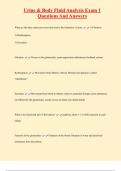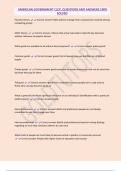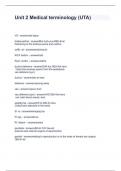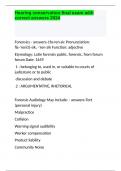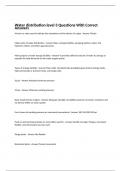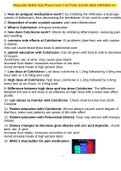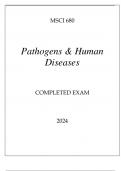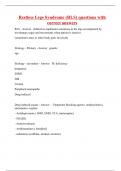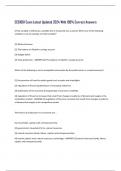Tentamen (uitwerkingen)
Urine & Body Fluid Analysis Exam 1 Questions And Answers
- Vak
- Instelling
Urine & Body Fluid Analysis Exam 1 Questions And Answers What are the three major processes that lead to the formation of urine 1) Filtration 2) Reabsorption 3) Secretion Filtration Occurs in the glomerulus; renin-angiotensin-aldosterone feedback system Reabsorption Movement from filtrate to ...
[Meer zien]
